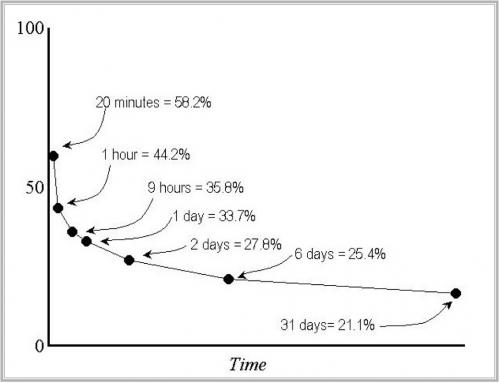In 1885, Herman Ebbinghaus did an experiment where subjects memorized a list of meaningless three letter words and tracked how quickly his subjects forgot the words. As you can see from the graph below, known as the Ebbinghaus forgetting curve, our learners will rapidly forget information. In the case of meaningless information, only 20 minutes after they only remember 58% of the information.
So how do we help them overcome the Ebbinghaus Curve? Well the speed of forgetting depends on a number of factors such as the meaningfulness of the information, stress level, repetition of information and the use of mnemonic techniques.
So, making the information meaningful for our learners is one way to help them remember. It is a lot easier to remember the phone number of a favorite restaurant than 7 meaningless numbers.
As the graph below shows, Repetition of learning definitely improves retention of information. Initially the information needs to be repeated quickly–good instructors often repeat the important information in a class. Review of information after a class has a dramatic effect on information retention. According to the Curve of Forgetting: University of Waterloo, participants who spend 10 minutes reviewing information within 24 hours of receiving will raise the curve almost to 100% again. A week later, it only takes 5 minutes to “reactivate” the same material and again raise the curve. By day 30, your brain will only need 2-4 minutes to give you the feedback, “Yes, I know that…”
So what are some of your thoughts on how to use this information to increase retention in your presentations, your classroom training, and e-learning? Comment below.
